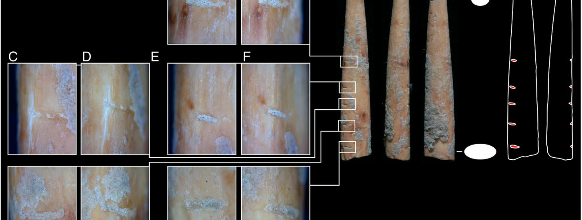Poison arrows and bone utensils from Kuumbi Cave, Zanzibar

Michelle C. Langley, Mary E. Prendergast, Ceri Shipton, Eréndira M. Quintana Morales, Alison Crowther & Nicole Boivin. Poison arrows and bone utensils in late Pleistocene eastern Africa: evidence from Kuumbi Cave, Zanzibar. Taylor and Francis Online (2016), DOI:10.1080/0067270X.2016.1173302
Abstract
Most of our current knowledge of late Pleistocene African bone technology is drawn from southern African sites, with recent discoveries indicating that bone- and stone-tipped arrows (propelled by a bow) were in use prior to 60,000 years BP. Integration of archaeological with ethnographic data similarly suggests that hunting with poison-tipped arrows on the African continent has an antiquity of at least 24,000 years. Unfortunately, similar analysis of material from eastern Africa is largely absent and consequently, with the sole exception of barbed points, we know very little regarding osseous technology in this region and how similar or dissimilar it is to contexts located further south. This paper presents a small assemblage of seven bone artefacts recovered from the late Pleistocene deposits of Kuumbi Cave, Zanzibar. Comparison of the bone projectile points, a bone awl and a notched bone tube with ethnographic and archaeological material from throughout the Sub-Saharan region suggests that, as elsewhere in Africa, bone technology was a central element in the Later Stone Age material culture repertoire of Kuumbi Cave’s inhabitants. It also suggests that arrow points coated with poison were in use in eastern Africa around 13,000 years BP.
Keywords
Zanzibar, osseoous technology, eastern Africa, awl, bone tube, poison arrow





